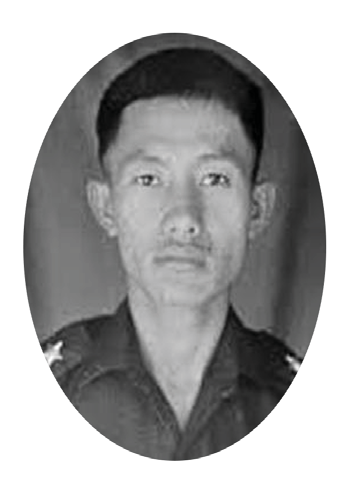Captain Neikezhakuo Kenguruse, born on 15 July 1974, hailed from Nerhema village in Kohima district of Nagaland. Son of Neisielie Kenguruse, Capt. Kenguruse had two brothers, Ngseue Kenguruse and Atoulie Kenguruse. After his schooling at St Xavier School in Jalukie, he did graduation from Kohima Science College. He then served as a teacher at the Government High School in Kohima from 1994 to 1997.
Capt. Kenguruse was commissioned into the Army Service Corps of Indian Army on 12 December 1998. He was in the field attachment with 2nd Rajputana Rifles battalion. As his first assignment, Capt. Kenguruse got posted to the unit deployed in J&K. His family would fondly call him ‘Neibu’ and in the army, he was better known as ‘Nimbu Sahab.’
War broke out between Pakistan and India in Kargil sector along the Line of Control (LoC) that demarcates Pakistan and Kashmir. Often the site of skirmishes, Kargil War was the largest and deadliest of these.
In 1999, when the Kargil War started, Capt. Kenguruse was a junior commander deployed in Drass sector. He was made the lead commander of the Ghatak Platoon of his battalion, a privilege for only the most physically fit and motivated.
On the fateful night of June 28, 1999, Capt. Kenguruse’s platoon was given the responsibility of taking out a strategic machine gun post held by the enemy on a cliff face, the Black Rock. Heavy gunfire had been hindering the battalion’s progress for days and it was very crucial to neutralise this enemy position. The assigned task was challenging as the gun post was on a cliff with a steep gradient and the path was open to enemy artillery fire.
Capt. Kenguruse swung into action along with his troops. About seven Pakistani bunkers stood before them, and heavy artillery greeted their journey up the knife-edge cliff of the hill. As they were nearing the first bunker, a grenade was thrown at them, which injured Capt. Kenguruse severely. He sustained splinter injuries in his abdomen but undeterred, he egged on his men.
As the commando team scaled the cliff, they came under intense mortar and automatic fire. Capt. Kenguruse decimated the first bunker using a rocket launcher. Motivated, the commando team moved further up the cliff. On reaching the final cliff face, they were halted by a rock wall that separated them from the enemy machine-gun post. They had to scale the wall to reach the enemy. While securing the rope to enable his men to climb over the face of the rock, Capt Kenguruse’s foothold was slipping.
At 16,000 feet and a temperature of minus 10 degree Celsius, Capt. Kenguruse kicked off his shoes for a better grip and scaled the rock barefoot.
Then two enemy soldiers from the second bunker charged towards him but he hacked them to death with his commando knife. As he was approaching the third bunker, a stream of bullets threw him off the cliff and he plunged down the cliff, a few hundred feet below. Capt. Kenguruse single-handedly destroyed two bunkers and was responsible for neutralising the enemy position.
His act inspired his men to capture the enemy position and kill the enemy troops to avenge his death. The mission was successful and the troops attributed their success to the daredevilry of Capt Kenguruse.
Captain Kenguruse was a fine officer who led from the front. The fiercely independent Naga spirit was a family legacy for him. His great, great grandfather, Perheile, had been one of the most respected warriors of the village. Today, there is a mist shrouded monument in Nerhema, dedicated to the warrior’s descendent.
Martyred at 25, Capt Kenguruse was given the nation’s second highest gallantry award, “Maha Vir Chakra” for his raw courage, indomitable spirit and supreme sacrifice. Capt Kenguruse also went on to become the first and the only recipient of Maha Vir Chakra from the Army Service Corps (ASC).

